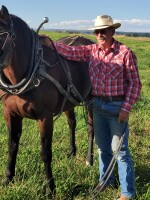The Purdue University Ag Economy Barometer polls 400 agriculture farmers and ranches around the country concerning their outlook on the agricultural economy. The recently released December survey found that for the first time since May, producers were positive about where their operations were headed, based on higher crop and livestock prices and increased income from government payments. But over 40% of the respondents were concerned about the prospects for higher input costs in 2022 and expectations that there will be shortages of fertilizer, crop chemicals, new equipment and repair supplies. Sixty one percent of the respondents also believed that land prices will continue to increase this year due mainly to outside investors like California’s Emmerson Family, who own more than 2.33 million acres, Liberty Media Chairman John Malone, who has 2.2 million acres of ranchland in the West and timberland holdings in the Northeast, and Bill Gates America’s largest private farmland owner with almost 260,000 acres of cropland. The 2021 Land Report 100, compiled each year by Land Report magazine reports that over 243 square miles of land is owned by wealthy investors in the U.S.
At this point in the winter, we’re seeing a fairly robust snowpack in western Colorado, which is considerably higher than it was at the same time last year. Last year, from the Continental Divide eastward, snowfall was above average throughout the winter. At this point, Western and northern areas of Colorado have adequate snowpack, while the southeast part of the state is below average. But an interesting weather fact came to my attention recently. Over the final six months of 2021, Denver saw less precipitation that is rain and snowfall equivalent, than Death Valley, California, which is home to the hottest and driest national park in the U.S. According to statistics from the National Weather Service station at Denver International Airport, 1.2 inches of precipitation were recorded from July through December. Weather Service records for the same time period from Death Valley indicate that 1.91 inches of precipitation fell on that hot, dry place. On average, a little more than 7 inches of precipitation falls in Denver during this period, while Death Valley averages a little over eight tenths of an inch.
The USDA’s National Institute of Food and Agriculture has launched a $10 million project with the goal to improve diversification, sustainability and resilience on Midwestern farms. The five-year study will involve faculty from several Midwestern universities and others in agriculture, to determine how farmers can lessen their reliance on monocrop systems and other strategies that will allow farmers to become more sustainable.
Last week, two restaurant chains announced that they are expanding their plant based menu nationwide. Kentucky Fried Chicken is offering its Beyond Meat plant-based chicken, and Chipotle is serving up plant-based chorizo. Both companies say these options will be available for a limited time.
The USDA announced last week that it will give schools roughly an additional 25 cents more per school lunch this year. Although it doesn’t sound like much, school food operators have been struggling with the increased costs of food, labor and packaging, while at the same time having to deal with uncertain supply chains.
A Japanese proverb caught my attention recently: "one kind word can warm three winter months."



